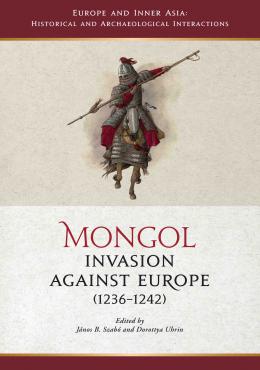Mongol Invasion against Europe (1236-1242)

Mongol Invasion against Europe (1236-1242)
| 16 020 Ft |
| Price |
This collection of essays offers a complex picture of the Mongol invasion of Eastern and Central Europe in its Eurasian context. The historical panorama covers many countries of Europe at the time of the invasion, and the analysis of previous historical studies, written sources, archaeological finds, and linguistic approaches plays an equally important role in the studies presented in this volume.
By the middle of the thirteenth century, Mongol conquests gave rise to the largest landlocked empire in world history. After Chinggis united the Mongol tribes and was elected Great Khan in 1206, nomadic warriors were assembled into an unparalleled military machine. Setting out from the territory of what is now Mongolia, they created an empire that, by the 1260s,
only two generations later, stretched over the entire Eurasian continent, from China to the Carpathians.
When attempting an analysis of the thirteenth-century Mongol attacks on Christian territories and the historical consequences of these events, it is important to consider how modern historical studies, archaeology, and other academic fields contribute to our understanding of this period. The traditional syntheses of medieval history that concentrated on Western Europe included information on the Mongol invasions, but for a long time, they typically described them as peripheral events of significance only to the outer extremes of Europe. In the present volume, therefore, traditional historical narratives on the invasions and military expeditions based on a wide range of written sources are also confronted with new archaeological finds and complex military historical investigations.
Sorozatcím:
Europe and Inner Asia: Historical and Archaeological Interactions
Volume 1
ISBN 978-615-5766-75-6, HU-ISSN 1216-6847, HU-ISSN 3058-0978 (Print), 354 oldal térképekkel, kartonált,
| |
|
|
1067 Budapest, Teréz krt. 13. |
|
|
|
|
About us
The Archaeolingua Foundation and Publisher is involved in publishing series and standalone publications in the disciplines of archaeology, linguistics, historic sciences and heritage protection for over 25 years.
Learn more
Publishing
We publish both as standalone editions and as a volume of a professional series.
Learn more
Contact us
Archaeolingua Foundation

